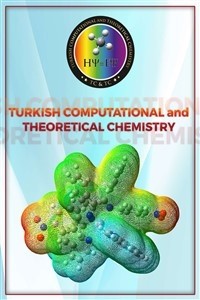A Computational study predicting the chemical reactivity behavior of 1-substituted 9-ethyl-βCCM derivatives: DFT- Based Quantum Chemical Descriptors
A Computational study predicting the chemical reactivity behavior of 1-substituted 9-ethyl-βCCM derivatives: DFT- Based Quantum Chemical Descriptors
___
- 1. Lippke KP, Schunack WG, Wenning W, Müller WE (1983) β -Carbolines as Benzodiazepine Receptor Ligands. 1. Synthesis and Benzodiazepine Receptor Interaction of Esters of β -Carboline-3-carboxylic Acid. J. Med. Chem. 26: 499-503. 2. Hagen TJ, Skolnick P, Cook JM (1987) Synthesis of 6-Substituted β -Carbolines That Behave as Benzodiazepine Receptor Antagonists or Inverse Agonists. J Med Chem 30: 750-753. 3. Dorey G, Poissonnet G, Potier MC, Carvalho LP, Venault P, Chapouthier G, Rossier J, Potier P, Dodd RH (1989) Synthesis and Benzodiazepine Receptor Affinities of Rigid Analogues of 3-Carboxy- β-carbolines: Demonstration That the Benzodiazepine Receptor Recognizes Preferentially the s-Cis Conformation of the 3-Carboxy Group. J Med Chem 32: 1799-1804.
- ISSN: 2587-1722
- Başlangıç: 2017
- Yayıncı: Koray SAYIN
Geometry and electronic properties of Vitamin C.
Jamelah S. AL-OTAIBI, Yahya AL HAZMI, Kamal M. MASMALI, Tarek EL GOGARY
Abdelkader LADJARAFI, Hacène MEGHEZZI
Aromaticity and planarity of zinc phthalocyanine (ZnPc) characterized by splitting of NICS(1) index
Teobald KUPKA, łukasz GAJDA, Małgorzata BRODA
Theoretical Evaluation of Six Indazole Derivatives as Corrosion Inhibitors Based on DFT
